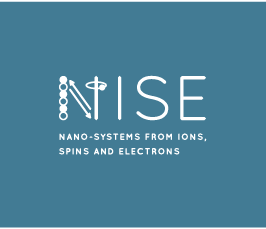Problems of room temperature superconductivity and metallic hydrogen
Seminar
- Datum: 12.12.2019
- Uhrzeit: 11:00 - 12:00
- Vortragende(r): Mikhail Eremets
- Max Planck Institute for Chemistry, Mainz
- Ort: Max-Planck-Institut für Mikrostrukturphysik, Weinberg 2, 06120 Halle (Saale)
- Raum: Lecture Hall, B.1.11
- Gastgeber: Max-Planck-Institut für Mikrostrukturphysik

Metallic hydrogen and room-temperature superconductivity are one of the most challenging and very long standing problems in solid-state physics. In both, there is a significant progress over the recent years. Nearly room temperature conventional superconductivity was discovered in hydrides¹: recently the critical temperature Tc ~250 K at high pressure of ~150 GPa was found in superhydride LaH10 ²'³ following the predictions⁴'⁵. We will discuss prospects for further increase of Tc to room temperature, in particular in yttrium hydride YH10 with predicted Tc ~300 K at 400 GPa and Li2MgH16 with Tc of ~473K at 250 GPa. We will consider various directions to explore high temperature conventional superconductivity at low and ambient pressures. Metallic hydrogen was predicted by Wigner and Huntington⁶ in 1935, and N. Ashcroft in 1968 suggested that it should be a high temperature superconductor⁷, room temperature superconductivity follows from the recent calcultions⁷'⁸. However achieving and measuring of metallic hydrogen is very challanging task, in particular, very high pressures are required⁹: only at ~370-500 GPa solid molecular hydrogen would dissociate and form atomic solid at pressures. In another scenario, the metallization first occurs in the 250-500 GPa pressure range in molecular hydrogen through overlapping of electronic bands¹⁰. The calculations are not accurate enough to predict which option is realized. Our experiments¹¹ indicate the metallization in molecular hydrogen through closing of energy gap. We observed that at a pressure of ~360 GPa and temperatures <200 K (phase III) the hydrogen starts to conduct, and that temperature dependence of the electrical conductivity is typical of a semimetal. Raman spectra, measured up to 480 GPa, indicate that hydrogen remains a molecular solid at pressures up to 440 GPa, while at higher pressures the Raman signal vanishes, likely indicating further transformation to a good molecular metal or to an atomic state.
References:
¹ Drozdov, A. P., Eremets, M. I., Troyan, I. A., Ksenofontov, V. & Shylin, S. I. Conventional superconductivity at 203 K at high pressures. Nature 525, 73 (2015).
² Drozdov, A. P. et al. Superconductivity at 250 K in lanthanum hydride under high pressures Nature (2019).
³ Somayazulu, M. et al. Evidence for Superconductivity above 260 K in Lanthanum Superhydride at Megabar Pressures. Phys. Rev. Lett. 122 027001 (2019).
⁴ Peng, F. et al. Hydrogen Clathrate Structures in Rare Earth Hydrides at High Pressures: Possible Route to Room-Temperature Superconductivity. Phys. Rev. Lett. 119 107001 (2017)
⁵ Liu, H. et al. Dynamics and superconductivity in compressed lanthanum superhydride. Phys. Rev. B 98, 100102(R) (2018).
⁶ Wigner, E. & Huntington, H. B. On the possibility of a metallic modification of hydrogen. J. Chem. Phys. 3, 764-770 (1935).
⁷ Ashcroft, N. W. Metallic hydrogen: A high-temperature superconductor? Phys. Rev. Lett. 21, 17481750 (1968).
⁸ Borinaga, M. et al. Anharmonic enhancement of superconductivity in metallic molecular Cmca − 4 hydrogen at high pressure: a first-principles study. J. Phys.: Condens. Matter 28, 494001 (2016).
⁹ Pickard, C. J. & Needs, R. J. Structure of phase III of solid hydrogen. Nature Physics 3, 473–476 (2007).
¹⁰ Johnson, K. A. & Ashcroft, N. W. Structure and bandgap closure in dense hydrogen. Nature 403, 632-635 (2000).
¹¹ Eremets, M. I., Drozdov, A. P., Kong, P. P. & Wang, H. Semimetallic molecular hydrogen at pressure above 350 GPa. Nature Physics, doi:10.1038/s41567-019-0646-x (2019).